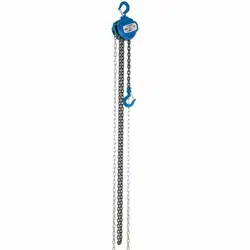Loading ...
Loading ...
Loading ...

- 4 -
- 9 -
3. GUARANTEE
3.1 GUARANTEE
Draper tools have been carefully tested and inspected before shipment and are guaranteed to be
free from defective materials and workmanship.
Should the tool develop a fault, please return the complete tool to your nearest distributor or
contact:
Draper Tools Limited, Chandler's Ford, Eastleigh, Hampshire, SO53 1YF. England.
Telephone Sales Desk: (023) 8049 4333 or:
Product Helpline (023) 8049 4344.
A proof of purchase must be provided.
If upon inspection it is found that the fault occurring is due to defective materials or workmanship,
repairs will be carried out free of charge. This guarantee period covering parts/labour is 12 months
from the date of purchase except where tools are hired out when the guarantee period is 90 days
from the date of purchase. This guarantee does not apply to normal wear and tear, nor does it
cover any damage caused by misuse, careless or unsafe handling, alterations, accidents, or
repairs attempted or made by any personnel other than the authorised Draper warranty repair
agent.
Note: If the tool is found not to be within the terms of warranty, repairs and carriage charges will be
quoted and made accordingly.
This guarantee applies in lieu of any other guarantee expressed or implied and variations of its
terms are not authorised.
Your Draper guarantee is not effective unless you can produce upon request a dated receipt or
invoice to verify your proof of purchase within the guarantee period.
Please note that this guarantee is an additional benefit and does not affect your statutory rights.
Draper Tools Limited.
8. MAINTENANCE
Care should be taken when handling and disposing of any lubricants. Clean the chain with a
non-acid and non-caustic type solvent.
8.1 HOOK INSPECTION:
Hooks damaged from chemicals, deformations or crack, or that have more than a 10 degree twist
from the plane of the unbent hook or excessive opening or seat wear must be replaced.
Hooks that are opened and those allow the latch to disengage the tip, must be replaced.
Any hooks that are twisted or has excessive throat opening indicates abuse or over-loading of the
unit. Other load sustaining components of the hoist should be inspected for damage.
Always ensure that the product is fully inspected before every use, this will prevent damage or
serious injury to person.
8.2 FREQUENT INSPECTION
A visual inspection is to be carried out by a trained person before every use. This inspection
should consist of:
- Evidence of slippage on the braking mechanisms.
- Inspection of the load chain for wear, lubricant, damaged chain links or dirt.
- Hooks for damage, fracture marks, cracks, latch engagement and latch operation.
- Any missing parts or safety devices
- Housing is not distorted.
8.3 PERIODIC INSPECTION
An appointed person who over see the visual inspection and ensures that records are taken to
ensure continue evaluation.
It will be necessary to partially disassemble the unit to perform more periodic inspection.
The periodic inspection are to include the following -
- more in depth inspection to look for wear, cracks or distortion of all parts of the chain hoist
including - hooks, chains, chain guide, hook collar, dead end stud, all nuts, bolts and pins,
shafts, gears and bearings.
- Inspection of the chain for excessive wear or stretch.
- Inspection for wear on the tip or the pawl, teeth or the ratchet and pockets of the lift wheel
and hand wheel, hook block sheaves and hanger sheaves
- Loose or missing bolts, nuts, pins or rivets.
- Inspection for corroded, stretched or broken pawl spring.
- Inspection of the brake compartment for worn, glazed, or oil-contaminated friction discs and
scoring of the hand wheel hub, ratchet and friction hub.
Any deficiencies noted are to be corrected before the hoist is returned to service.
Any parts that are deemed unserviceable are to be replaced with new parts before the unit is
returned to service.
Loading ...
Loading ...
Loading ...
